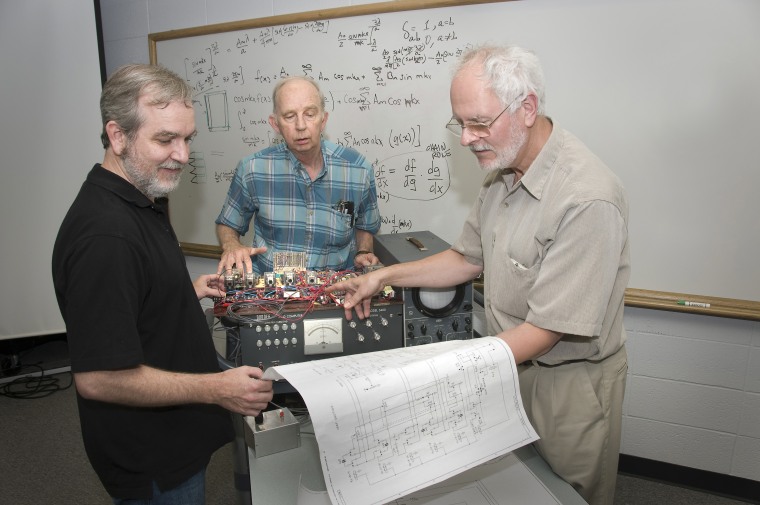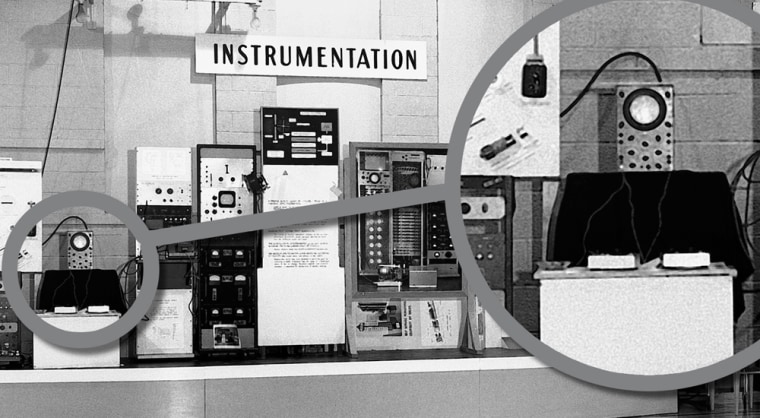Fifty years ago, before “Pong” and “Space Invaders,” a nuclear physicist created “Tennis for Two,” a 2-D tennis game that some say was the first video game ever.
The game was never meant for commercial use. “Tennis for Two” was a science experiment, created by William Higinbotham for the annual visitor’s day at Brookhaven National Laboratory in Upton, N.Y. His aim wasn’t to kick off the multibillion-dollar game industry — he just wanted to “liven up the place” with his invention. And, as he wrote, “convey the message that our scientific endeavors have relevance for society.”
It worked. Hundreds of people lined up to play “Tennis for Two” on Oct. 18, 1958. Players saw a side view of a tennis court on an oscilloscope screen and used an aluminum controller to serve and volley the “ball,” a bright dot that left trails as it bounced from one side of the “net” to the other. “Tennis for Two” was, as the name suggests, a two-person game. Mid-century co-op, you might say.
To celebrate the game’s 50th anniversary, Brookhaven is giving players another shot at “Tennis for Two.” On Friday, the lab will open its doors to the public from 11 a.m. to 2 p.m., displaying “Tennis” alongside more modern game hardware, including the Nintendo Wii, the Sega Genesis and the Atari 2600.
The ginormous “Tennis for Two” makes the Atari 2600 look like an iPod shuffle. In addition to the oscilloscope screen and the controller, the guts of the original game were contained in an analog computer, which is “about as big as a microwave oven,” says Peter Takacs, who re-created “Tennis for Two” over a decade ago.
“We have to load it into the back of a station wagon to move it,” he says. “It’s not a Game Boy that you put in your pocket.”
The original game was dismantled about a year after its debut. But Takacs, himself a physicist with the same Brookhaven department Higinbotham headed back in the 1950s, decided to try and rebuild it over a decade ago. Each department at Brookhaven was asked to come up with a display that people could look at when they came to the lab for its 50th anniversary celebration.
“I thought it would be interesting to see if we could try to find the original instrumentation and put the thing together,” he says.
It took Takacs and three colleagues about three months to rebuild “Tennis for Two.” “We put in, like, three quarters of a year of effort to get this thing going. And according to Willy Higinbotham’s notes, it only took a couple of days for him to outline it and maybe two weeks to wire it up and get it going.”

That’s largely because the team didn’t have the original equipment. Back when the original “Tennis for Two” was built, Higinbotham used a vacuum tube analog computer, the likes of which went out of fashion and into landfills around the same time John F. Kennedy was elected president. So Takacs and his fellow physicists used modern, solid-state chips to reproduce it.
But these newfangled chips don’t tolerate the big voltage spikes generated by the game’s operation as well as the old-school analog computer, and they kept blowing out. Takacs and his colleagues had to put protective circuits in to keep them from being destroyed.
The current technology doesn’t work as well as the old technology,” he says. “It’s too sensitive.”
After its 1997 showing for Brookhaven’s birthday, the retooled “Tennis for Two” did a stint at the Gerald Ford Library. But mainly, says Takacs, the unit’s “basically been in mothballs.” When he pulled it out recently to see if it still worked, he was pleased to find that it did.
“We’re crossing our fingers that it stays alive long enough to last through the day on Friday,” he says. “It seems to be working fine.”
When he’s not updating 50-year-old video games, Takacs measures the quality of optical surfaces used in the National Synchrotron Light Source.
But, you know, futzing around with an ancient electronic tennis game posed a challenge.
“It was an interesting exercise to try and get into the mindset of what research was like 50 years ago,” he says.
“I think they had a lot of fun,” he says. “We have a lot of fun now, and they had a lot of fun then, too.”
If you’d like to visit Brookhaven to play “Tennis for Two,” check out the lab’s Web site for details and directions.
